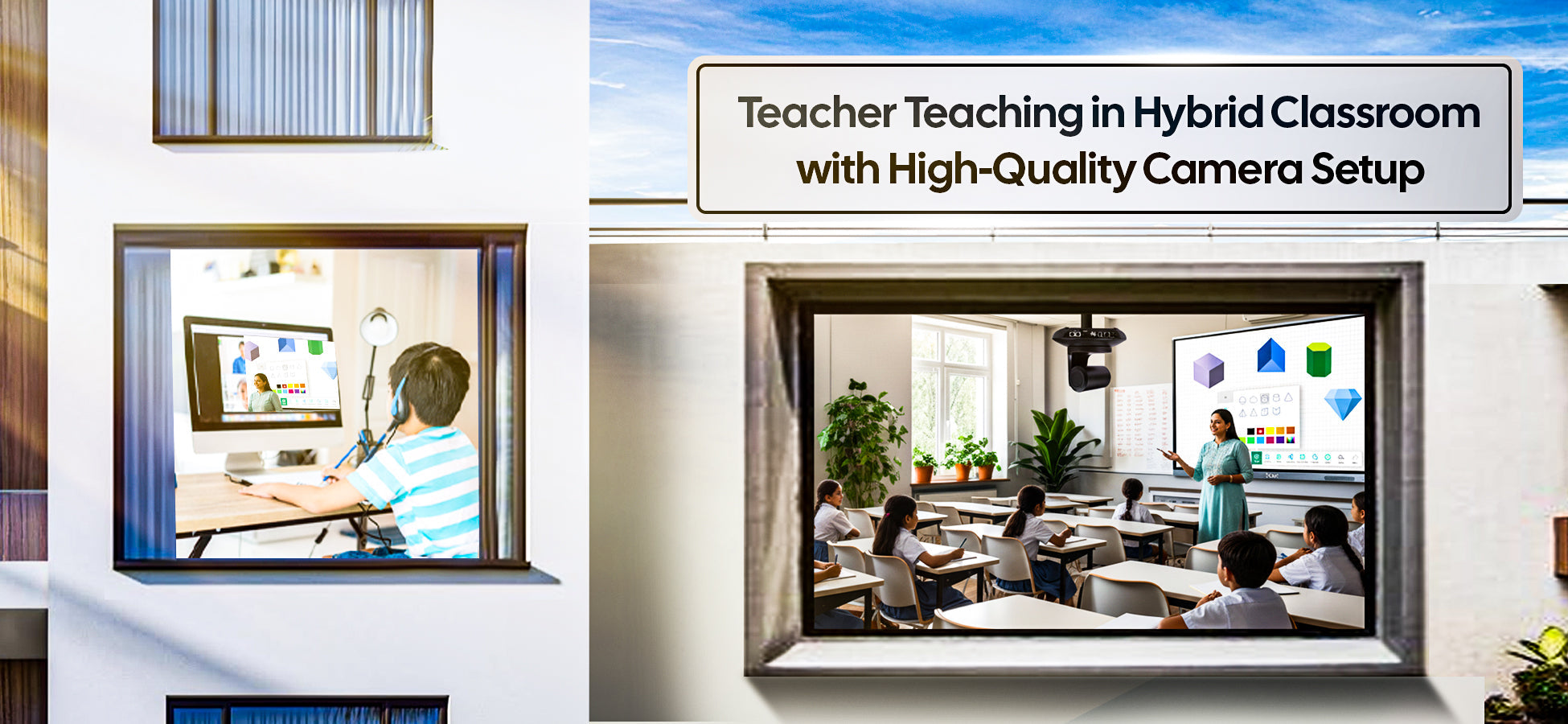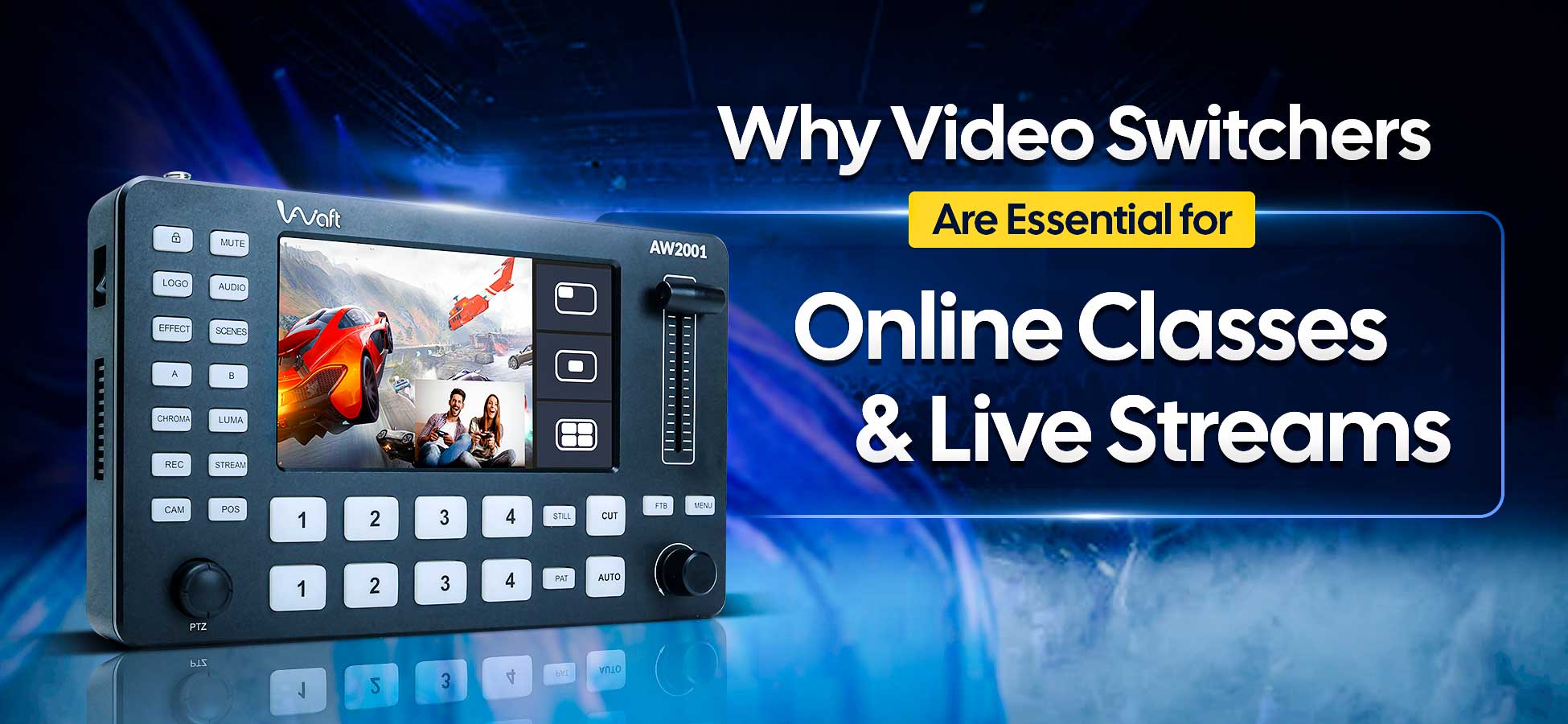Introduction
Do you make videos but struggle to improve your video’s audio quality? Quality audio recording is more crucial than ever as technology improves and more areas of our lives become digitalized. People demand clear audio whether they are viewing a commercial, a YouTube video, listening to music, or watching an online conference or lecture. Listeners will go on to other material if your audio quality is bad.
If you produce recorded material for your business, your audio quality must be flawless. Poor audio quality can cause dissatisfaction, a drop in revenue, and an unfavorable image of your company. Even if you're new to audio recording, there are a few easy approaches you may employ. This piece will assist you in improving your audio quality online so that you can begin generating professional-sounding audio in no time.
What is the importance of Video’s Audio quality?
We rate videos and other recordings depending on the quality of their audio, whether we realize it or not. As a result, anything less than high-quality audio might discourage people from listening to your video. Your audio quality also conveys a sense of professionalism to your viewers.
High-quality audio indicates that the person in charge of recording has taken the time and effort to record decent audio. One of our primary modes of communication is verbal communication, which includes audio recordings. As a result, it is critical that any audio you record be clear and easy to understand.
Bitrate levels can be used to assess high-quality audio in more technical terms. The amount of data conveyed into audio is referred to as the bitrate. In general, a greater bitrate indicates better audio quality. Even for listeners with no formal audio training, audio files with less than 90 kilobits per second (kbps) will have a significant reduction in quality.
The appropriate bitrate level will be determined by the audio file type and mode of listening. The recommended bitrate for streaming services such as Apple Music and Spotify, for example, varies from 96 to 160 kbps. Meanwhile, the bit rate of an MP3 file spans from 96 to 320 kbps.
5 tips to improve your video's audio quality
Use a Good Microphone
If you're just starting with audio content creation, the built-in microphone on your computer or smartphone may suffice. However, if you want to produce high-quality video’s audio quality, you'll need an external microphone.
Choosing the correct microphone for your setup, on the other hand, might be challenging due to the wide range of designs and models available on the market. You must select the appropriate polar pickup pattern, select between dynamic and condenser microphones, and determine whether to use a USB or XLR connection. You can check this page, for the best microphone options.
You'll also want to invest in a microphone stand or boom arm to steady it to decrease the danger of damage (not to mention inconsistent sound). A sturdy shock mount will also shield your microphone from vibrations and undesired noises.
Finally, unless you have a USB microphone, you'll need something to connect your microphone to your computer. It might be an audio interface or an audio mixer.
Purchase a Pop Filter
If you've been making audio material for a long, you're certainly familiar with the issue of plosives the popping noises that occur when pronouncing strong consonants like 'p' or 'b.'
A pop filter functions as a barrier to video’s audio quality, filtering out plosives and ensuring that you capture studio-quality audio. Without one, such irritating sounds might detract from your audience's listening experience.
Avoid using echo
While shouting inside a tunnel and hearing your voice echo back at you is interesting, unwanted echo within an audio recording is not. Taking precautions to minimize echo before recording is critical to improve your video's audio quality.
A decent rule of thumb is to avoid areas with hard surfaces. Recording in a room with a lot of soft surfaces, such as carpet, drapes, tapestries, and soft upholstered furniture, will assist in absorbing sound waves and prevent echoing. Smaller rooms tend to perform better than larger spaces. If your home has a lot of hard surfaces, such as wood flooring, consider recording in a walk-in closet surrounded by hanging clothing.
Make Use of Good Recording Software
Choose high-quality recording software to offer crystal-clear audio if you want optimal audio quality during the recording stage.
Unfortunately, not all audio recording software is equal; some just have different priorities. You can record audio using applications like Zoom and Skype, but these platforms are meant for internet calling, therefore audio files are compressed for faster transfer. Although compressed music is easier to transport, the audio quality suffers as a result.
Look for recording software that includes the following capabilities for the greatest audio quality:
- Audio at a resolution of up to 48kHz.
- Various audio formats (including MP3 and uncompressed WAV files).
- Each participant's gadget will be recorded locally.
- Individual tracks for each participant.
- Audio mixing capabilities allow you to add sound effects and music to your video's audio quality.
- Host controls that allow you to change your visitors' audio settings.
Don't forget to do a sound check
Although this appears to be a no-brainer, it is one that many people overlook. Take a few minutes after you've completed setting up your presentation recording location and are almost ready to begin to produce a small test video. It doesn't have to be difficult; simply videotape yourself uttering a few short sentences. When you finish your test recording, you can check it to ensure that the video's audio quality is precisely what you want. Making a test recording allows you to make any necessary fast changes before recording your actual video, saving you from any surprises in the end.
Conclusion
Your video’s audio quality needs to be perfect to the extent that it pleases the ears of your listeners, otherwise, no one will be interested in watching your video. In this regard, eliminating basic errors would go a long way, and this blog has provided you with helpful ideas to prevent these blunders.
If you are certain that you will continue to use YouTube or shoot videos in the long run, we strongly advise you to get a microphone for better audio quality.



